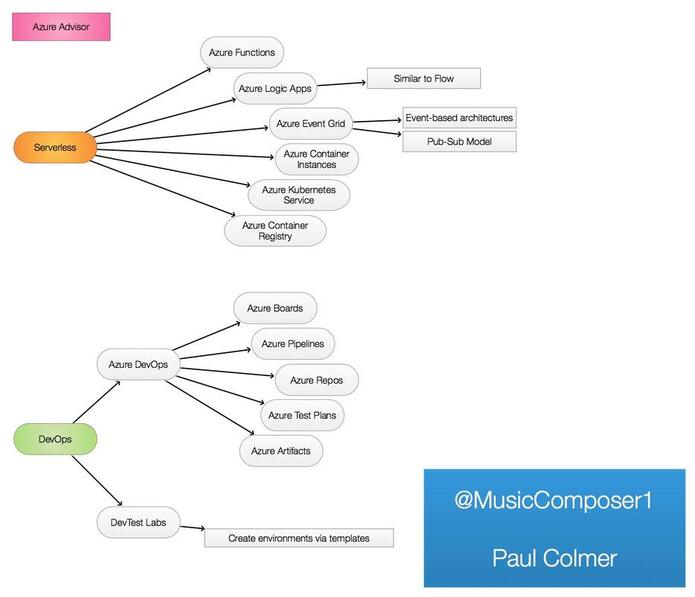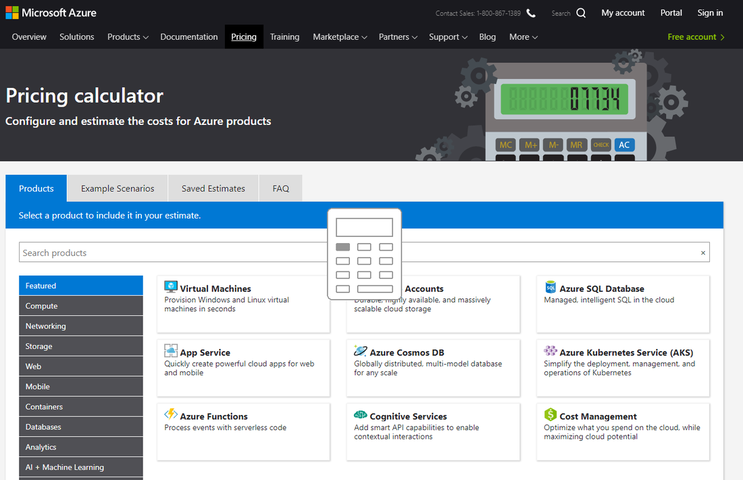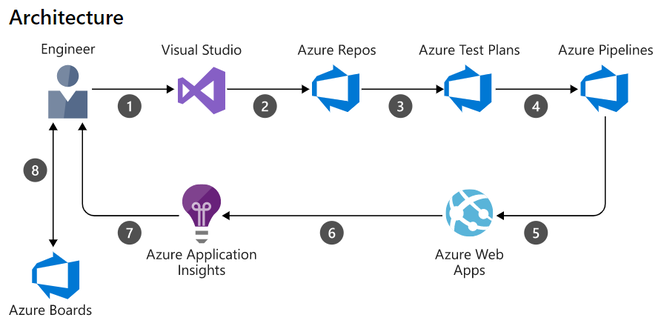|
G'day awesome people. This will be No.3 in my series on how to pass the Microsoft Azure Fundamentals exam. Today I'll cover serverless and devops, kicking off with a mindmap showing all the key Azure services that you'll need to know for the exam. Click on the diagram to go to my FREE flashcards too: Or click on the link below for access to a whole range of FREE flashcards: quizlet.com/Paul_Colmer Let me start off by talking about what the terms serverless and devops actually mean... What is Serverless?A serverless service, is one where the cloud provider takes care of many of the infrastructure components for you. This includes the virtual machines, the operating system, the hypervisor and the physical hardware. It also includes the networking and storage relating to files or objects. However the exact scope does vary slightly between serverless services. The idea behind is serverless is that it allow developers to deploy code really quickly, at scale, requiring little or no infrastructure knowledge. The cloud provider handles all the technical details and ensures the infrastructure can flex as required. All the developer needs to worry about is paying for the service. The way the service is billed, depends on the service itself. With Azure functions it is based on code executions. These executions include a free quota, which makes serverless very attractive. With Azure Container Instances it is billed on CPU and memory consumption per second. Also be aware that there maybe some additional infrastructure costs, such as Public IP addresses and storage. Always best to utilise the Azure Calculator, which you can find by clicking on the diagram below: What is DevOps?DevOps is a cultural-based movement, concerned primarily with bringing agile software development methods and practices to both the development and operations teams. This results in the dramatic speed increases of code releases with higher quality and less waste. The 5 core values for a DevOps culture include: Culture, Automation, Lean, Measurement and Sharing. The emphasis is very much on changing the habits of individuals and for leaders to lead by example. Organisations that are able to adopt DevOps practices benefit from improved talent retention and attraction rates, improved time to market on features, lower stress and higher engagement levels amongst employees, ultimating leading to culture of high performance. The Azure tools outlined in the roadmap ultimately support the creation of a continous integration, continous delivery pipeline (CI/CD) which is the core paradigm in use for improving flow, feedback loops and encouring ongoing experimentation and learning within the teams. Below is an example of how the Azure DevOps tools can be used in a CI/CD pipeline: Please reach out and let me know what you think of these resource and tools:
www.linkedin.com/in/paulcolmer/ twitter.com/musiccomposer1 www.instagram.com/paulcolmer/?hl=en https://twitter.com/DigitalColmer
0 Comments
Your comment will be posted after it is approved.
Leave a Reply. |
CategoriesAll Active Directory AI Architecture Big Data Blockchain Cloud Comedy Cyber DevOps Driverless Cars MicroServices Office 365 Scaled Agile Social Media AuthorPaul Colmer is an AWS Senior Technical Trainer. Paul has an infectious passion for inspring others to learn and to applying disruptive thinking in an engaging and positive way. Archives
May 2023
|







 RSS Feed
RSS Feed